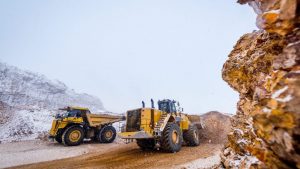The push for greener building technology has boosted the use of fly ash as a partial replacement for cement in concrete. Some in the industry say the result is a tighter mix that not only adds strength, but produces a better finish.
CALGARY
The push for greener building technology has boosted the use of fly ash as a partial replacement for cement in concrete. Some in the industry say the result is a tighter mix that not only adds strength, but produces a better finish.
Each year, Canada’s coal-burning power plants produce more than 4.7 million tonnes of fly ash, according to the Association of Canadian Industries Recycling Coal Ash (CIRCA).
About 31 per cent is recycled — mixed into concrete for such uses as walls, footings, bridge decks, precast structures and bricks — and the remainder is landfilled.
“This whole green movement has been a good thing,” said Kevin Kisiloski of Calgary’s ASHCOR Technologies, a CIRCA member. “It’s really put a positive spin on the use of a lot of recycled materials, ash being one of them.”
Since 1998, ASHCOR — which markets coal combustion products from ATCO Power’s plants — has tapped into the growing demand for fly ash, which now earns LEED credits as a recycled material.
“The approach we like to put on it is we’re reusing a material that would have been thrown back into the ground.
“We’re replacing a portion of cement powder, and the rule of thumb we like to use is that for every tonne of fly ash used in cement powder, there is a tonne of CO2 gases that is not created,” Kisiloski said.
The use of ash in construction materials is nothing new, he added.
“The Coliseum in Rome, that’s all basically made with volcanic ash. ASHCOR is not creating the wheel here, by any stretch of the imagination.”
Curtis Bouteiller, CEO of Proform Concrete Services in Red Deer, said fly ash is a common ingredient in the concrete used by his contracting and precast divisions.
He said fly ash helps produce a creamier mix and a denser concrete with increased long-term strength.
As well, he estimated his company saves five to 10 per cent by using fly ash concrete.
“The big advantage is it allows you to get the strength at a reduced cost,” Bouteiller said.
According to CIRCA, the spherical shape of fly ash increases the mix plasticity, reduces water use, improves cohesiveness, produces a more pumpable mix and creates a stronger and less permeable concrete with greater resistance to sulphates.
One limitation is a longer curing time — as much as triple that of regular concrete.
For that reason, fly ash use in Alberta is limited and sometimes banned for outdoor pours during colder weather, Bouteiller said. Proform’s precast plant cures indoors, however, avoiding the weather-related restrictions.
Kisiloski said fly ash concrete continues to gain strength beyond the typical 28-day cure period, to 56 or 90 days.
“You probably will exceed what you need — it will just take you a little longer to get there.”
The slower cure is also a benefit, he said, as it helps regulate the temperature and creates a better set.
This is particularly important for big pours, such as in dam construction.










Recent Comments
comments for this post are closed